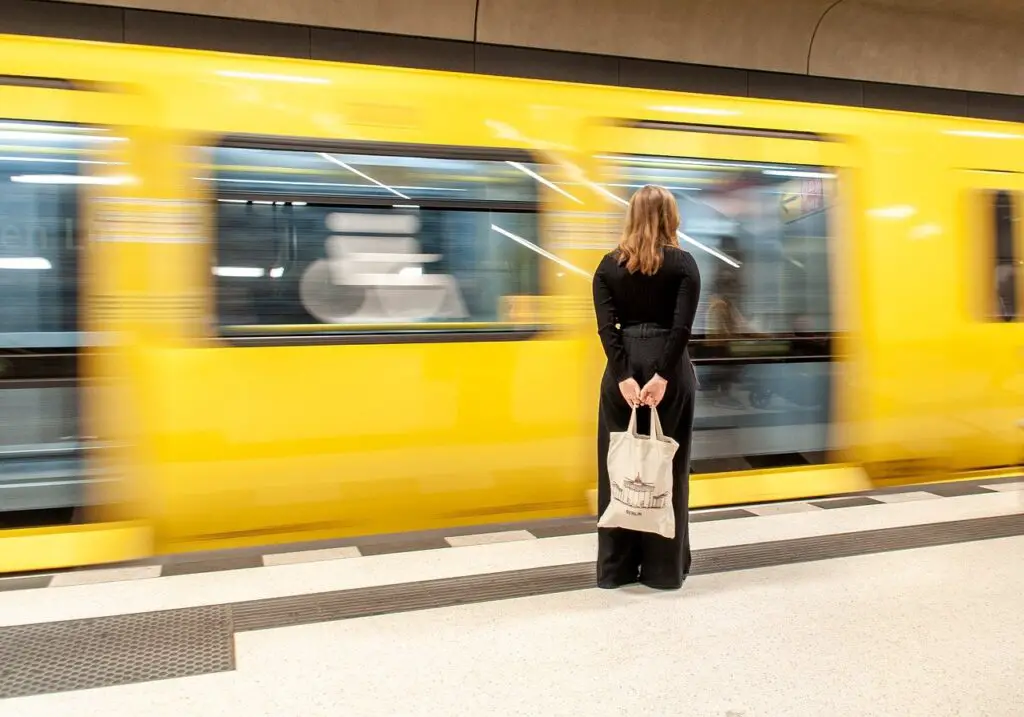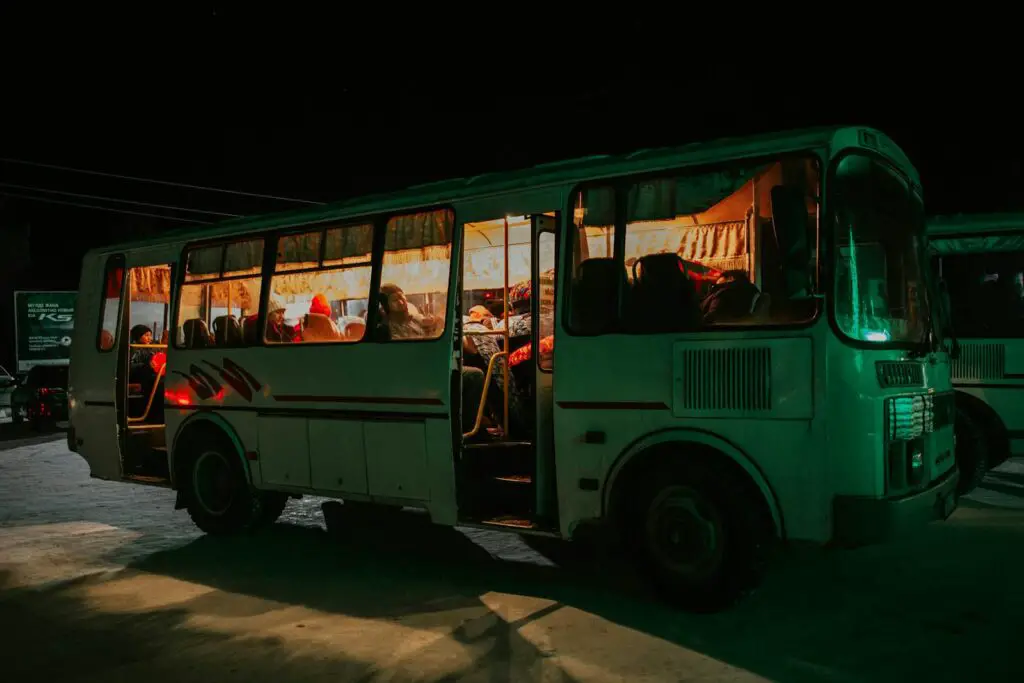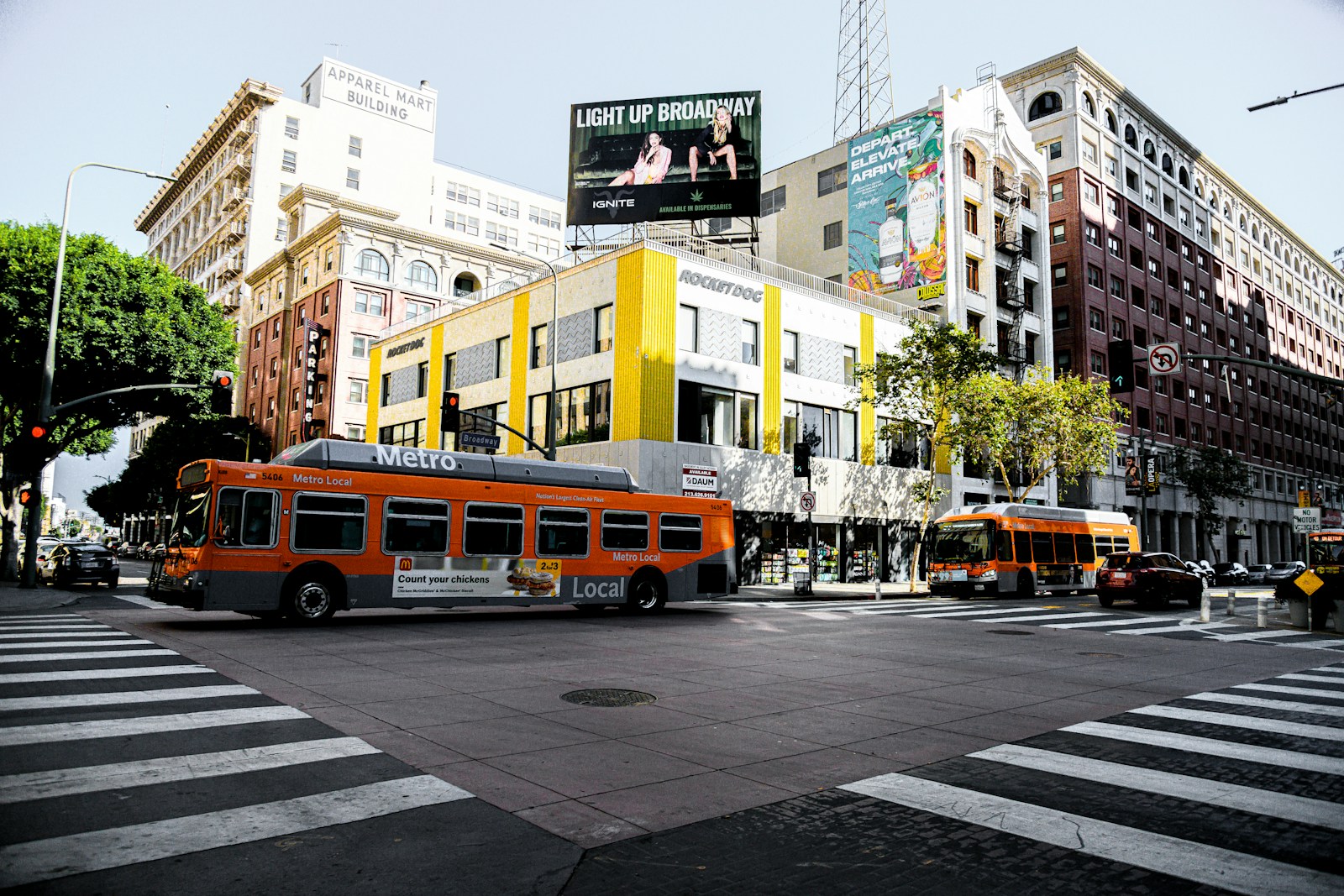Understanding the Importance of Public Transportation Abroad
When you’re traveling overseas, figuring out how to get around can be a puzzle. Public transportation often turns out to be your best bet, and here’s why.
Cost-Effectiveness
Public transportation saves you money. Airport taxis can drain your wallet faster than you think. A bus or subway ride, on the other hand, costs a fraction and gets you where you need to go without breaking the bank.
Environmentally Friendly
Think about the planet! Using public transit reduces your carbon footprint. It’s a small step, but every little bit helps. Plus, many cities now have eco-friendly options like electric buses and trams.
Immersive Experience
Want to live like a local? Get on that bus or train. You’ll see how people in that city live their everyday lives. You’ll get off the beaten path and discover hidden gems that you wouldn’t find otherwise.
Reduced Stress
Driving in a foreign country can be a nightmare. Traffic laws, road signs, and driving habits vary. Public transportation offers a stress-free alternative. Sit back, relax, and let the bus or train driver handle the chaos.
Accessibility
Public transportation is everywhere. Urban sprawls, tiny villages, and even remote mountains often have some form of transit. Apps and websites can help you find these systems. You’re rarely far from a bus stop or train station.
Safety
It might feel daunting at first, but public transportation is generally safe. Cities invest in security features like cameras and patrols. You’ll often find helpful locals who are willing to give you directions or advice.
Time Management
Stops and schedules are usually predictable, enabling you to plan your day more effectively. Dedicated lanes for buses and trams often mean fewer delays.
In a nutshell, hopping on a bus, train, or tram can make your travels more economical, eco-friendly, and enriching.
Research Before You Travel: Resources and Tools
Before embarking on your journey, take some time to gather information. Equip yourself with the right resources and tools to make your transit experience smooth.
Online Resources
- Official Transit Websites: Start with the official websites of the cities you plan to visit. These often provide maps, schedules, and fare details.
- Example: Transport for London for the UK, MTA for New York.
- Travel Blogs and Forums: Check out travel blogs and forums where travelers share their experiences.
- Examples: Reddit’s r/travel, TripAdvisor forums.
- City Tourism Websites: They often have sections dedicated to public transport.
- Example: VisitBerlin’s public transport guide.
Mobile Apps
- Google Maps: Essential for route planning and real-time transit information.
- Citymapper: Excellent for comprehensive transit info in major cities.
- Moovit: Provides detailed routes, live updates, and service alerts.
- Transit App: Great for real-time tracking and finding alternative routes.
Language Assistance
- Google Translate: Translate signs or ask for help.
- Duolingo or Babbel: Learn basic phrases related to public transport.
Social Media
- Twitter: Follow official transit authorities for real-time updates.
- Facebook Groups: Join travel or expat groups for insider tips and advice.
Paper Resources
- Guidebooks: Sometimes, old-school is cool. They often have great maps and tips.
- Examples: Lonely Planet, Rick Steves.
- Printed Maps and Schedules: Grab these from tourist information centers.
Local Tips
- Ask Your Host: Whether it’s a hotel concierge or Airbnb host, they can provide valuable advice.
- Talk to Locals: Strike up a conversation; locals know the best shortcuts.
Safety Information
- U.S. State Department Travel Advisories: Check for any travel warnings impacting public transport.
- Local News Websites: Stay informed about strikes or transit disruptions.
Equipped with these resources, you’ll be ready to navigate any transit system with ease. Dive into the research, and your journey will be that much smoother.
Essential Apps and Tools for Public Transit
The right apps and tools can make using public transit abroad much easier. Here are some must-haves:
- Google Maps:
- Your all-in-one solution for navigation. It offers real-time transit schedules, step-by-step directions, and even street view to help you identify landmarks.
- Citymapper:
- Perfect for major cities, it provides real-time updates, alternate routes, and even bike-sharing options.
- Moovit:
- Another solid choice, especially in less prominent cities. It includes live arrival times, route suggestions, and service changes.
- Transit:
- This app tracks buses, trains, and trams in real-time. It also offers offline timetables.
- Rome2rio:
- Ideal for long-distance travelers, it compares flights, trains, buses, ferries, and car rentals all in one place.
- Local Transit Apps:
- Many cities offer their own apps that provide detailed local info, including system maps and ticketing options.
- Language Translation Apps:
- Google Translate or iTranslate can help you if you need to read signs or ask for directions.
- Currency Converter:
- XE Currency is handy for converting fares into your home currency.
- VPN:
- Ensure you have a VPN like ExpressVPN or NordVPN for secure internet access, especially if you’re using public Wi-Fi.
- Digital Wallets:
- Apple Pay, Google Wallet, and others can help streamline mobile payments, especially for transit tickets.
- Offline Maps:
- Download offline maps from apps like Maps.me in case you lose internet connectivity.
- Weather Apps:
- Staying updated on the weather helps you plan for delays or changes to transit schedules.
“The best way to efficiently navigate a foreign city’s public transit system is to be well-prepared and well-equipped.”
Use these apps and tools to get from point A to point B effortlessly, making your travel experience smoother and more enjoyable.
Language Barriers: Overcoming Communication Challenges
Traveling in a foreign country can be thrilling, but navigating the transit system when you don’t speak the language can be a headache. Here are some tips to help you overcome communication challenges:
- Learn Key Phrases:
- “Where is the bus stop?”
- “How much for a ticket?”
- “Which platform for the train to…?”
- “Thank you.”
- Use Translation Apps:
- Download apps like Google Translate. They can translate text or even speech in real-time. Plus, they have an offline mode – super handy if you don’t have Wi-Fi.
- Carry a Pocket Dictionary:
- A small phrasebook or dictionary can be a lifesaver. Look for ones tailored to travelers, focused on transit-specific terms.
- Visual Aids:
- Carry a map or download map apps. Pointing to locations or routes on a map can break down language barriers in seconds.
- Take pictures of your destinations or important signs.
- Offline Maps:
- Apps like Maps.me let you download maps for offline use. You can search routes without needing an internet connection.
- Gesture:
- Don’t underestimate the power of body language. Gesturing towards an object or direction can often convey your message without words.
- Ask Fellow Travelers:
- Look for people who seem familiar with the transit system. They might speak your language or be bilingual.
- Utilize Technology:
- Translation earbuds have hit the market. Companies like Waverly Labs offer wearable tech that translates conversations in real-time.
- Be Patient:
- Take your time and approach situations confidently. A smile and patience go a long way in cross-cultural communication.
Remember, nobody expects you to be fluent. Making the effort can lead to memorable interactions and sometimes even new friendships.
Buying Tickets and Passes: A Step-by-Step Guide
- Research Your Options
- Before you even leave, check online for your destination’s transit website. Look for sections on ticket types, prices, and where to buy them.
- Download relevant apps; many cities now offer official apps that simplify ticket purchasing and offer transit schedules.
- Determine Your Needs
- Decide if you’ll need a single-ride ticket, a day pass, or a longer-term pass. If you’re staying for a while, most places offer more economical options for weekly or monthly passes.
- Where to Buy Tickets
- At the Station: Most major transit systems have ticket machines at stations. These machines often have options for multiple languages. Look for signs indicating where the machines are.
- Convenience Stores: In many countries, you can buy tickets at local convenience stores like 7-Eleven or Lawson.
- Online and Apps: Check if the city offers an online portal or app where you can buy and use tickets directly from your phone.
- Using Ticket Machines
- Approach the machine and select your language.
- Choose your ticket type and number of tickets.
- Pay using cash, credit card, or mobile payment methods.
- Take your tickets and receipts. Make sure to keep them handy until your ride is over.
- Buying from Convenience Stores
- Ask the cashier for the specific type of ticket or pass you want.
- Pay and collect your ticket. Some stores will also help you reload transit cards.
- Using Mobile Apps
- Download the official transit app.
- Create an account if required.
- Add your payment method.
- Choose your ticket type and purchase it. It should appear in the app, ready for use.
Pro Tip: Always check if your chosen method requires activation. Some tickets or passes need to be validated before use.
- Validating Your Ticket
- Onboard: Some systems allow validation directly on the bus or tram using installed machines.
- Before Boarding: Most rail systems require you to validate at a machine on the platform before boarding. Look for machines near the entrance or on the platform itself.
- Navigating with E-Tickets
- Ensure your phone is charged. A dead phone means no ticket.
- Open the app and have your ticket ready to show inspectors or scan at gates.
- Understanding Zones and Validity
- Many cities use zoning systems. Be aware of which zones your ticket covers.
- Check the validity period. Single rides usually have a shorter window, while day passes might cover a full calendar day.
Reminder: Failing to buy or validate your ticket can result in hefty fines! Always double-check to avoid any unnecessary issues.
Safety Tips for Using Public Transit in Foreign Countries
When you’re exploring a new country, public transit can be your best friend. But, safety first! Here are some tips to keep you safe and sound:
- Research Before You Go
- Look up the transit system of your destination online.
- Get familiar with routes, stops, and schedules ahead of time.
- Stay Alert
- Keep your eyes open and be aware of your surroundings.
- Avoid distractions like using your phone too much.
- Mind Your Belongings
- Use a crossbody bag to keep your valuables close.
- Avoid flashing expensive gadgets or large sums of money.
- Know Local Scams
- Research common scams in the area.
- Be cautious if someone offers unsolicited help.
- Use Official Maps and Apps
- Download official transit apps for updates and real-time information.
- Carry a small paper map as a backup.
- Avoid Empty Cars or Stations
- Stay in well-populated areas, especially at night.
- If a tram or subway car is empty, consider moving to another.
- Respect Local Customs and Rules
- Follow the local etiquette, whether it’s about lining up or giving up your seat.
- Knowing some basic phrases in the local language can be quite helpful.
- Emergency Contacts
- Know the local emergency numbers.
- Keep the address of your accommodation handy, in case you need directions.
- Trust Your Instincts
- If something doesn’t feel right, trust your gut.
- Don’t hesitate to get off at the next stop if you feel uncomfortable.
- Buddy System
- Travel with a companion when possible.
- If you’re solo, let someone know your planned route and estimated time.
Remember, your safety is paramount. Better safe than sorry, so take these precautions seriously. They’ll help you enjoy your trip without unnecessary drama. Safe travels!
Cultural Etiquette and Public Transit: What You Need to Know
When you hop on a bus, train, or metro in a foreign country, blending in with the locals isn’t just about knowing which stop to get off at. It’s also about understanding and respecting cultural norms.
Be Mindful of Personal Space
- Asia: In places like Japan, people are extremely mindful of personal space and quietness, even when it’s crowded.
- Europe: In cities like Paris or Berlin, you might notice people generally keep a bit more distance and avoid direct eye contact.
Respect the Elderly and Disabled
- Always offer your seat to elderly, disabled, or pregnant passengers.
- Look out for designated seats and make sure they are left available.
Loud Conversations and Phone Calls
- Silence is Golden: In countries like Japan and Germany, speaking loudly or making phone calls on public transit is a big no-no.
- Chat Away: Places like Italy and Spain are more relaxed about this, but it’s always courteous to keep your volume in check.
Eating and Drinking
- Forbidden Fodder: In places like Singapore, you’re not even allowed to bring food or drink on the train.
- Snackable: In some parts of the U.S., you might see people eating, but always check local rules to be safe.
Boarding and Exiting
- Stand clear of the doors until passengers have exited.
- Queue up in an orderly manner. Pushing and shoving are generally frowned upon.
Local Customs
- Bowing in Japan: You might see people bowing slightly when thanking the bus driver.
- Eye Contact in Latin America: Meeting eyes and smiling often makes for a friendly interaction.
Tickets and Validations
- Make sure you validate your ticket if required to avoid hefty fines.
- In some countries like Italy, there’s no barrier, but conductors check tickets regularly.
Politeness and Courtesy
- Greetings: In places like Russia, it’s polite to greet the bus driver.
- Small Gestures: A simple “thank you” goes a long way everywhere.
Miscellaneous Tips
- Wear headphones if you’re listening to music.
- Keep your belongings close to avoid pickpocketing.
Navigating public transit can be a breeze if you respect local customs and show basic courtesy.
Navigating Maps and Schedules: Best Practices
Understanding maps and schedules is crucial when you’re trying to navigate a foreign transit system. Here are some best practices to make the process smoother for you:
- Get a Physical Map: While digital maps are convenient, a printed map can be a lifesaver if your phone dies or if there’s no Wi-Fi.
- These can often be found at transit stations or tourist information centers.
- Use Transit Apps: Many cities have specific transit apps that provide real-time updates.
- Apps like Citymapper, Google Maps, and Moovit can show you the quickest routes and notify you of any service disruptions.
- Learn the Key Terms: Familiarize yourself with basic transit terminology in the local language.
- Words like “exit,” “entrance,” “platform,” and “ticket” can be very useful.
- Check Schedules in Advance: Make sure to check the timetables for buses, trains, or subways.
- Some routes may run less frequently on weekends or holidays.
- Note peak and off-peak hours to avoid overcrowded trains or buses.
- Estimate Travel Times: Use tools that estimate your travel time, considering possible delays.
- Maps.me and Rome2rio are great for this.
- Plan for Transfers: If your route involves multiple transfers, plan them ahead of time so you know exactly where you need to go.
- Note the transfer stations and how much time you have between connections.
- Ask for Help: Don’t hesitate to ask locals or transit staff for directions if you’re confused.
- They can often provide shortcuts or tips that you won’t find online.
- Look at Station Layouts: Before making a trip, look at the layout of the stations you’ll pass through.
- Knowing where the exits, restrooms, and information desks are can save you time.
- Carry a Translation App: Google Translate or another translation app can help you read signs and schedules.
- Offline versions of these apps can be particularly useful.
- Practice Patience: Transit systems can be stressful, especially in a foreign country.
- Give yourself plenty of time and try to stay relaxed, even if you make a mistake.
“Better to arrive late than never” – applies here perfectly. Missing a connection isn’t the end of the world; just adapt and go with the flow.
Taking these steps will help you navigate foreign public transportation systems with more confidence and ease. Remember to keep calm and enjoy the adventure.
Considerations for Different Transit Modes: Buses, Trains, Trams, and More
When you’re using foreign transit systems, you’ll need to adapt to various modes of transport. Here’s what to keep in mind for each:
Buses
- Routes and Schedules: Buses can have complex routes. Google Maps or local transit apps are lifesavers for figuring out where you’re going.
- Payment Methods: Some cities use contactless cards, while others still rely on cash or coins. Make sure you know beforehand.
- Stops: Bus stops might not be announced. Keep an eye on Google Maps if you’re unsure when to get off.
Trains
- Timeliness: Trains are usually punctual, so make sure you’re there on time or you’ll miss it.
- Tickets: You might need to validate tickets before boarding. Look for machines right outside the platform.
- Comfort: Long-distance trains can be pretty comfy with amenities like Wi-Fi and food service.

Trams
- Local Integration: Trams are often integrated with city travel and might share the road with cars, so stops can be frequent.
- Stations: Tram stops are generally well-marked but can sometimes be tricky to locate.
- Ticketing: Systems vary, but you generally buy tickets at kiosks or onboard. Validate them immediately!
Subways/Metros
- Speed and Efficiency: Subways are great for quickly zipping across the city. Peak hours can be crowded.
- Maps and Signage: Familiarize yourself with the subway map before heading out.
- Safety: Always keep an eye on your belongings in crowded cars.
Ferries
- Scenic Routes: Ferries offer unique city views but can take longer than other modes.
- Schedules: Check ferry schedules in advance; they can be less frequent.
- Weather: Bad weather can affect operations, so have a backup plan.
Bicycles
- Rentals: Many cities offer bicycle rentals. Check if your travel pass includes bike rentals.
- Paths: Cities might have dedicated bike lanes. Know the local biking rules.
- Helmets: In some places, helmets are mandatory. Better safe than sorry!
Ride-Sharing/Taxi Apps
- Localization: Apps like Uber work in many places but might have local alternatives.
- Language Barriers: Input your destination in the app to avoid miscommunication.
- Payments: Make sure you know if cash or card is preferred.
Navigating these different transit modes effectively can make your travel smoother and more enjoyable.
What to Do When Things Go Wrong: Handling Delays and Interruptions
Navigating a foreign transit system can get tricky, especially when things don’t go as planned. Don’t stress, though! Here’s how you can cope with delays and interruptions like a seasoned traveler:
Stay Calm and Collect Information
- Keep Cool: First, take a deep breath. It’s easier to think clearly when you’re not panicking.
- Check Updates: Look for information on delay screens, apps, or transit website updates. Many systems provide real-time updates.
- Ask for Help: Don’t hesitate to approach a station attendant or fellow passengers for information.

Have a Backup Plan
- Alternate Routes: Familiarize yourself with different routes using maps or apps before you travel.
- Flexible Timing: Give yourself extra travel time in case you need to take a different train or bus.
- Be Prepared: Carry a backup power bank for your phone. It’s essential for staying connected and accessing route information.
Communicate
- Inform Others: Whether it’s meeting friends or catching a flight, inform relevant people about the delay.
- Language Barriers: If language is a problem, translation apps can be your best friend. Simple phrases or showing your ticket can also help convey your situation.
Protect Your Belongings
- Close Watch: Keep an eye on your belongings when moving through crowded or confusing areas.
- Secure Your Bag: Always zip and secure your bag to deter pickpockets, especially if you’re distracted by a change in plans.
Keep Essentials Handy
- Snacks & Water: A small snack and a bottle of water can be lifesavers if you’re stuck waiting.
- Entertainment: Have a book, music, or a game on your device to keep you occupied.
Embrace the Delay
- Explore: This might be an unexpected chance to explore an area you hadn’t planned to visit.
- Local Flavor: Try a nearby café or street food vendor. New adventures can happen when you’re open to them.
Learn from Experience
- Take Notes: Make a mental note or jot down what went wrong and how you dealt with it.
- Adapt: Use what you learn to better navigate future trips.
When the unexpected happens, handling it well can turn a hiccup into a highlight of your travels!
Saving Money with Public Transportation: Tips and Tricks
Using public transportation abroad can be super easy on your wallet if you know a few tricks. Here’s how to get the most bang for your buck:
- Research Passes and Discounts: Many cities offer daily, weekly, or even monthly passes that can save you big time. Look for tourist cards that bundle attractions with unlimited transit rides.
- Travel Off-Peak: Try to avoid rush hour. Tickets are often cheaper during off-peak times, plus you’ll have a more comfortable ride without the crowds.
- Use Transit Apps: Download local transit apps to find the best routes and get real-time updates. Some apps even have notifications for deals and discounts.
- Check for Student or Senior Discounts: If you’re a student or senior, don’t forget to ask for a discount. Bring a valid ID—it’s worth the extra cargo in your bag.
- Avoid Single Tickets: Buying single tickets can add up quickly. Plan ahead and get multi-trip passes if available.
- Walk Short Distances: Sometimes it’s just a few blocks to your destination. Save a fare and get some exercise by walking instead.
- Use Multi-Modal Options: Public bike shares or ride-sharing options can be cheaper and quicker for certain journeys. Integrate them with bus or metro trips to save time and cash.
- Pre-Paid Metro Cards: These can offer lower fares compared to buying individual tickets. Top them up to avoid paying extra fees for card issuance every time.
- Luggage Fees: Keep an eye out for added luggage fees on certain public transportation systems, especially on airport shuttles or intercity buses.
- Local Advice: Don’t hesitate to ask locals or fellow travelers for tips. There might be hidden gems they use to save money on transit.
By following these tips, you can explore more and worry less about your travel budget.
Traveling with Accessibility Needs: Finding Inclusive Options
Traveling with accessibility needs doesn’t have to be a headache. With a bit of research and planning, you can find options that are inclusive and accommodating. Here’s how you can navigate this process effectively:
Research Before You Go
- Check Online Resources:
- Websites like “Accessible Travel Online” and “Wheelchair Travel” offer detailed accessibility information for various cities worldwide.
- Government tourist websites often provide up-to-date information on accessible public transport options.
- Join Online Communities:
- Forums and social media groups dedicated to travelers with accessibility needs can be invaluable for personal experiences and recommendations.
Plan Your Route
- Accessible Maps:
- Apps like Google Maps often have features that show which routes are wheelchair accessible.
- Some cities have their own apps offering detailed information about accessible transit routes.
- Accessible Transport Options:
- Buses and Trains: Many metropolitan areas have buses and trains equipped with ramps and designated seating areas.
- Accessible Taxis: Available in most major cities. Apps like Uber and Lyft offer accessible ride options.

At the Airport
- Request Assistance:
- Most airlines and airports offer assistance services. Make sure to request help at least 48 hours in advance.
- You can get wheelchair assistance, help with luggage, and even expedited security screening.
On the Ground
- Speak Up:
- Don’t hesitate to ask for assistance or clarification on accessible routes and services from local transport authorities.
- Use translation apps if there’s a language barrier.
- Stay In Accessible Accommodations:
- Look for hotels and rentals that meet your accessibility needs by checking reviews and contacting properties directly.
During Your Stay
- Utilize Local Resources:
- Tourist information centers often have resources and tips for travelers with disabilities.
- Ask about accessible tourism attractions, restaurants, and public facilities.
- Emergencies:
- Know the local emergency numbers and have them saved on your phone.
- Carry a small card with key phrases in the local language that explain your needs.
Traveling with accessibility needs doesn’t have to be a barrier. With proper preparation and utilizing available resources, you can explore the world comfortably and confidently.
Eco-Friendly Travel: Benefits of Using Public Transit Abroad
Traveling eco-friendly can be a win-win for both you and the planet. By hopping on public transit, you reduce your carbon footprint and immerse yourself in the local scene. Here’s why using public transit abroad rocks:
- Reduced Carbon Emissions: Public transit dramatically cuts down the amount of CO2 emitted per person compared to cars. Go green by choosing buses, trains, or trams.
- Cost-Effective: Public transit is generally cheaper than renting a car or frequently using cabs. You’ll save money that can go toward local eats, tourist attractions, or souvenirs.
- Convenience: Major cities have well-developed transit systems designed to get you anywhere you need to go efficiently. Plus, many transit systems offer apps with real-time schedules and updates.
- Less Stress: Forget about driving in a foreign country with unfamiliar traffic rules. Sit back, relax, and let someone else do the driving.
- Cultural Experience: You’ll see how locals move around their city, hear the language, and maybe even strike up interesting conversations—creating an authentic travel experience.
- Safety: Public trains and buses in most places are well-patrolled and safe, especially during the day. Just keep an eye on your belongings.
- Environmental Impact: Each bus, tram, or subway ride helps reduce the number of cars on the road, cutting down on pollution and contributing to cleaner air.
- Efficient Urban Layouts: Cities with robust public transit often have more walkable neighborhoods. You’ll find it easier to explore shops, parks, and restaurants without needing a car.
- Scenic Routes: Some public transit options offer scenic or unique routes (think San Francisco’s cable cars or the London Underground), making your trip more memorable.
- No Parking Hassles: Forget the headache of finding a parking spot in crowded tourist areas. Public transit stops are typically close to major attractions.
So next time you’re abroad, grab a transit map, get your tickets, and take the eco-friendly route. You’ll be doing your part to protect the environment while getting to enjoy the journey. Happy travels!
Tips for Seamless Transfers Between Transit Systems
Navigating between different transit systems can be a bit tricky, but here are some handy tips to keep things smooth:
- Plan Ahead: Research the local transit systems you’ll be using. Look up maps, schedules, and routes online before you embark on your journey.
- Buy a Universal Pass: Some cities offer passes that work across different modes of public transport (e.g., buses, trains, and trams). It usually saves time and money.
- Be Mindful of Timing: Check the frequency of your transfers. Sometimes, you might have to wait longer for the next connection, so plan your travel time accordingly.
- Have Local Currency: While many places accept cards, some smaller transit systems may only take cash. Always carry a bit of local currency just in case.
- Download a Transit App: Apps like Google Maps or local transit apps can guide you through your transfers in real-time and make sure you get off at the right stop.
- Ask Locals: Don’t hesitate to ask someone for help if you’re unsure where to go. Most people are happy to assist and provide directions.
- Pay Attention to Announcements: Listen for any station or route changes announced while you’re riding. This is especially useful if you’re unfamiliar with the language.
- Keep Your Tickets Handy: Some connections require you to show your ticket again. Make sure you don’t bury your tickets in your bag too deep.
- Mind the Gap: Watch your step when transferring between platforms or transit vehicles, especially in older stations where there can be large gaps.
- Know Peak Hours: Transfers might be more crowded during rush hours, so if you prefer less crowded travels, plan to transfer at off-peak times.
“Better three hours too soon than a minute too late.” – William Shakespeare
Frequently Asked Questions: Solving Common Problems
What should I do if I get lost?
- Ask for Help: Don’t hesitate to ask a local. They’re often friendly and willing to assist.
- Use a Map App: Download offline maps before you leave. Apps like Google Maps or Maps.me can guide you even without internet.
- Landmarks: Familiarize yourself with notable landmarks. They are great reference points.
- Transit Apps: Transit-specific apps often have real-time updates and can help reroute you quickly.
How do I deal with language barriers?
- Learn Basic Phrases: Knowing a few key phrases like “Where is the bus stop?” or “How much does the ticket cost?” can go a long way.
- Translation Apps: Google Translate is a lifesaver. It even works offline and can translate signs using your phone’s camera.
- Gesture: Sometimes, a friendly smile and a bit of miming can do wonders.
What if I don’t have the correct change for fare?
- Tickets in Advance: Buy tickets or passes in advance from kiosks or online.
- Reloadable Cards: Many transit systems offer reloadable cards, making fare payment straightforward.
- Change Machines: Look for change machines near ticket booths.
- Local Stores: Some small stores or kiosks near stations may provide change for larger bills.
How can I avoid the pitfalls of rush hour?
- Travel Off-Peak: If possible, plan your trips during non-peak hours, typically mid-morning or mid-afternoon.
- Check Schedules: Use transit apps to check when trains, buses, or subways are less crowded.
- Walk Short Distances: Sometimes walking a short distance can make a huge difference in avoiding crowded stations or stops.
What if the bus or train is delayed?
- Check for Updates: Use transit apps or follow the local transit authority on social media for real-time updates.
- Alternative Routes: Have a backup route. Knowing a couple of alternate paths can save you a lot of stress.
- Local Insights: Asking locals or transit staff might give you tips on faster alternatives.

How do I handle ticket inspections and fines?
- Know the Rules: Make sure you understand how and where to validate your ticket. Some systems require you to validate before boarding.
- Keep Records: Hold onto your validated ticket until your trip is complete.
- Explain Honest Mistakes: If you get caught without a valid ticket, explain honestly. Sometimes being polite and honest can result in a warning instead of a fine.
What if my phone battery dies?
- Bring a Charger: Carry a portable charger to avoid this issue.
- Paper Backup: Keep a small map or printed directions as a backup.
- Ask for Directions: Resort to asking locals or transit staff for directions if you’re unsure.
Any tips for using ride-sharing services abroad?
- Know the Rates: Research typical ride-sharing rates beforehand to avoid paying too much.
- Safety First: Verify the driver and car details before getting in.
- Local Services: Sometimes local ride-sharing apps are more reliable or cheaper than global ones like Uber or Lyft.
Travel smart, stay safe, and enjoy your journey!


Leave a Reply